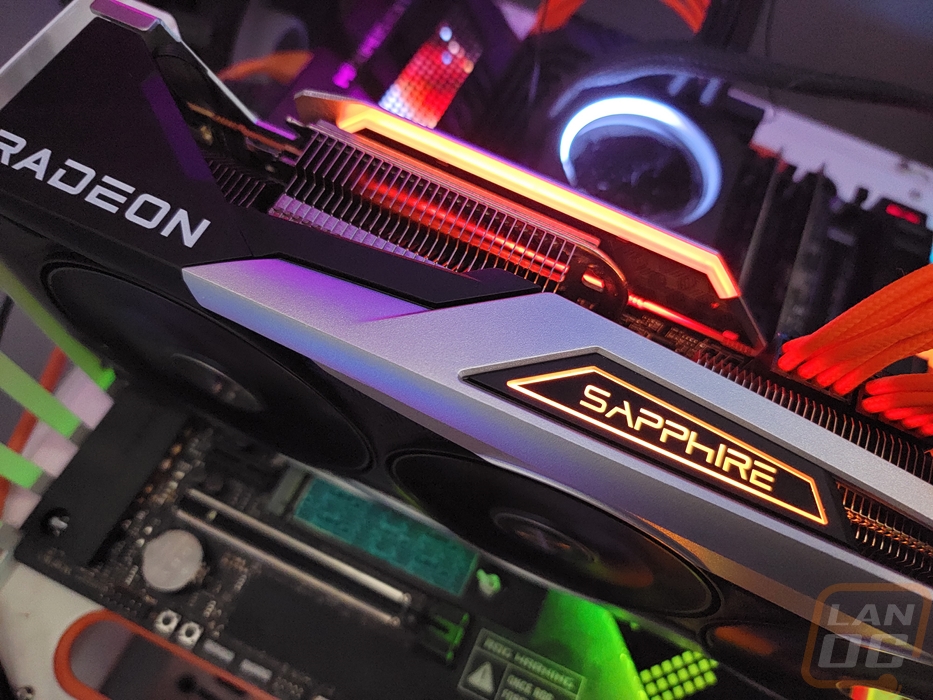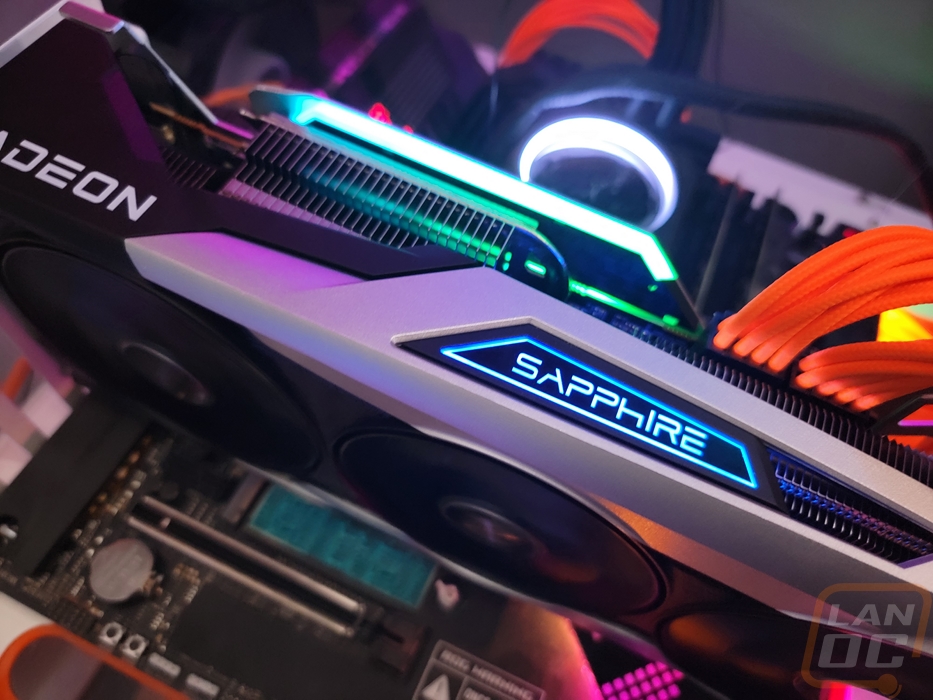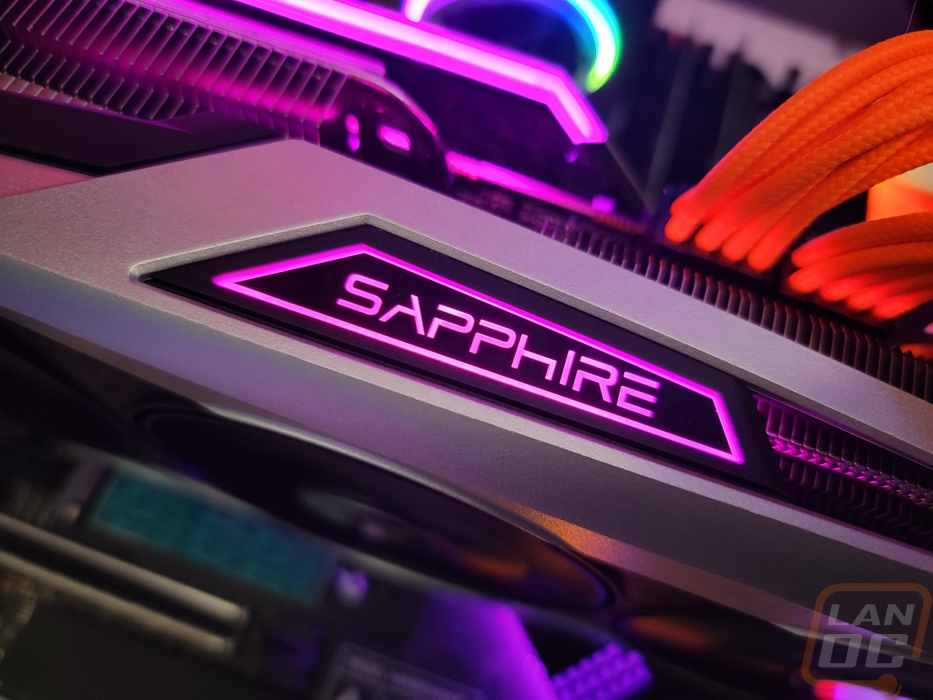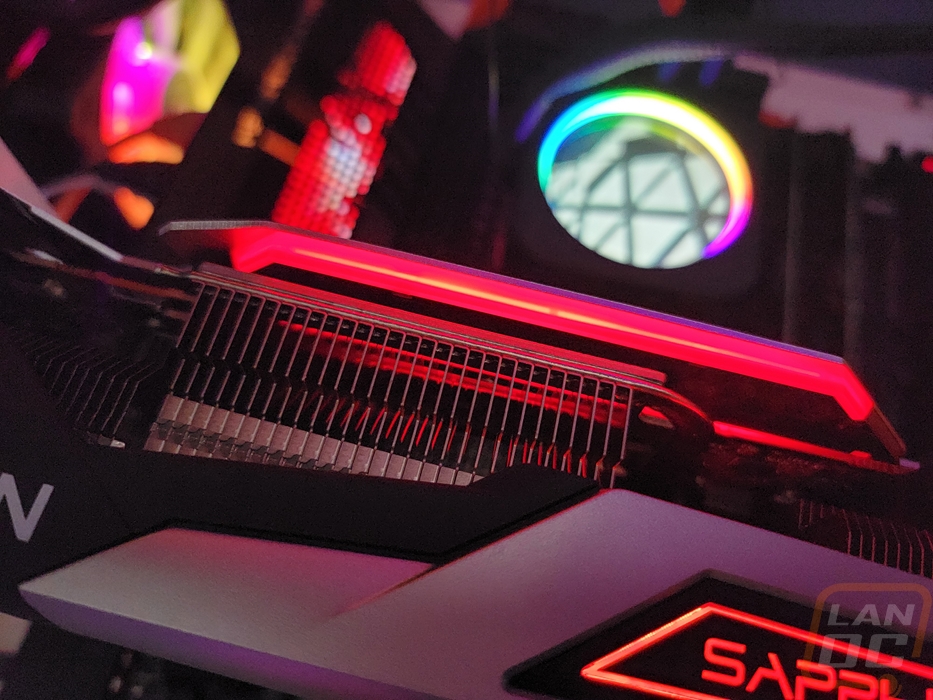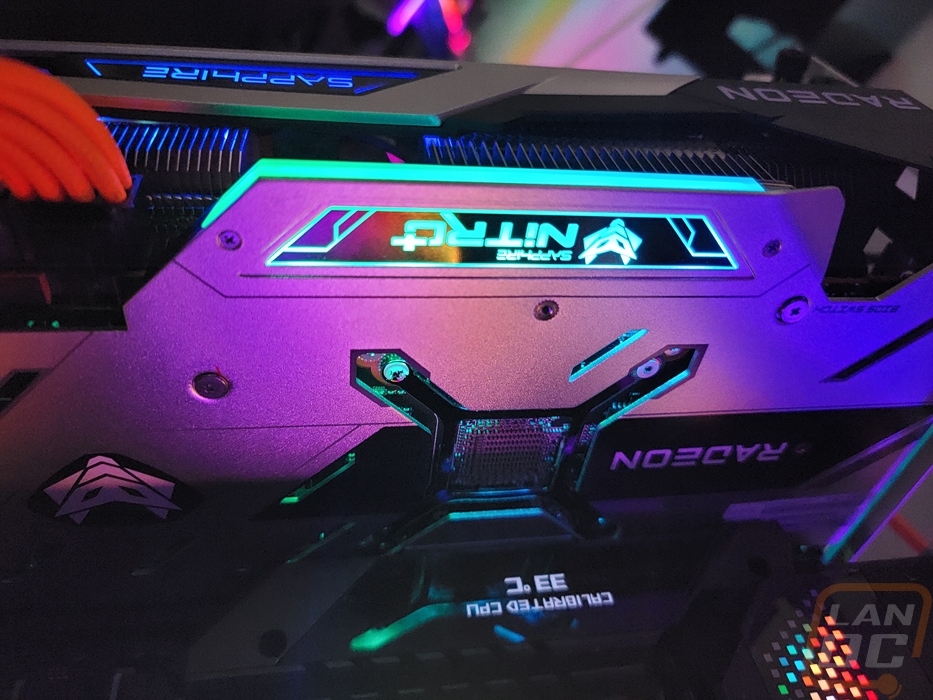Card Layout and Photos
The Nitro+ RX 6750 XT shares a lot of its staying with the Nitro+ RX 6700 XT but it isn’t exactly the same. It has the same combination of black down the center which gets smaller as you go right and silver accents, but the angle of the change is different. This is once again a three fan card with the center fan being smaller. The shroud has a cool 3d box shape repeating over most of the black area in between the fans and overall the Nitro+ design is simpler and less “gamer” than some other card designs.


The triple fan layout has completely new fans which Sapphire calls their angular velocity hybrid fans. Most GPU fans have a spiral shape to the fan blades to give them a more aggressive angle on the inside of the fan while on the outside being a little less aggressive for noise. This takes that idea to another level for more air pressure and to a lesser extent more air volume as well. Sapphire's documentation shows that this design has 144% more air pressure at a 30 dB level and 119% more airflow. The new fans have the Nitro+ logo in the center with a blue ring but are otherwise black to match the fan shroud. The larger outside fans are 95mm wide and the inner fan is 85mm wide. The two outer fans spin counterclockwise and the inner fan spins clockwise. These are also quick connect fans that can be removed with one screw, something Sapphire started back in the 400 series of cards and frankly I had no idea that they still did but I’m glad they do because it can make home fan replacement easy and with that prevent people from having to send out a whole card for a dead fan RMA which saves you shipping and time and Sapphire money as well. Everyone wins.





The Nitro+ RX 6750 XT has the same 310mm length as its Nitro+ RX 6700 XT brother and it even has the same 130mm height which is still very tall. But it is thicker with a full 18mm of fan shroud from the top of the PCI bracket. While the bracket is only a 2 slot bracket, this is a full 3 slot card and even more if you want to leave a little room for the fans to get air.


The Nitro+ RX 6750 XT has a full metal backplate that runs the length of the card. It has a silver finish to go with the rest of the card along with a black stripe and a few small grey accents as well. In the black stripe it has the Radeon branding and to the side of that the Nitro+ logo as well which both are upside down so they are visible when installed in a case. Up near the top, they have the Sapphire and Nitro+ branding as well. The backplate uses small slits cut out for accents and then along the top they have large openings cut out for the power plug and the BIOS switch. Then the entire end of the card is open for blow-through ventilation past the end of the PCB. Also in this end, Sapphire has included an addressable RGB header where you can hook up addressable RGB lighting to be controlled using the Sapphire software. This is a nice addition for anyone who doesn’t have addressable RGB control on their motherboard or is already out of headers.



Along the top edge of the Nitro+ RX 6750 XT, the backplate opens up for access to the power connections and the BIOS switch. For the power connections, the Nitro+ RX 6750 XT has two 8-pin connections whereas the Nitro+ RX 6700 XT had an 8-pin and a 6-pin. The BIOS switch lets you switch between the standard BIOS and a secondary BIOS has a silent focus with a 200-watt TGP (vs 230 Watt) and its clock speeds are the stock AMD specs for the 6750 XT at 2600 MHz for the Boost clock and 2495 MHz for game clock. Also up on the top edge, Sapphire has their logo which is backlit in RGB, and the Radeon logo which is just printed on in white. If you look closely you can also see a small diffuser bar behind the logo that lights up the edge of the backplate as well.




Looking around the edges of the Nitro+ RX 6750 XT we can see that the heatsink has a vertical layout that will blow the air out the top and bottom of the card. The heatsink is tight up against the PCB but I was surprised that once it gets past the PCB that they didn’t take advantage of that extra space as well. The end of the card gives us a peek at the 5 large heatpipes and Sapphire has also snuck in the Nitro+ logo on this end of the fan shroud. Then on the bottom, we can see where the heatpipes transition down up against the GPU and the thermal plate around the GPU for the memory.



For the PCI bracket, the Nitro+ RX 6750 XT has a chromed finish and the ventilation holes that take up most of the bracket have the Sapphire S in the middle as well as the Sapphire logo down at the bottom edge. For connection options, it has the standard 3 DisplayPort and 1 HDMI layout with the HDMI labeled and the second from the bottom.

Having reviewed the Nitro+ RX 6700 XT previously I didn’t initially think that the Nitro+ RX 6750 XT was much different. But once you get them next to each other the size difference is apparent and you can spot a few smaller differences as well. For example, the Sapphire logo on the Nitro+ RX 6750 XT doesn’t have the line around it and the backplate diffuser on the Nitro+ RX 6700 XT was longer as was the PCB. The Nitro+ RX 6750 XT has the dual 8-pin power connections which I mentioned earlier but the biggest difference is in the thickness of the card which is the difference between a 2.2 slot and a full 3 slot card.



The RGB lighting on the Nitro+ RX 6750 XT is bright and lights up the Sapphire logo on the top edge as well as the Nitro+ logo on the backplate. They also have the diffuser in that same area that runs along the edge of the backplate. I like that on the backplate that the lighting does also come out some of the accent slots in the backplate for a nice effect though overall I wish there was more accent lighting and fewer backlit logos.
